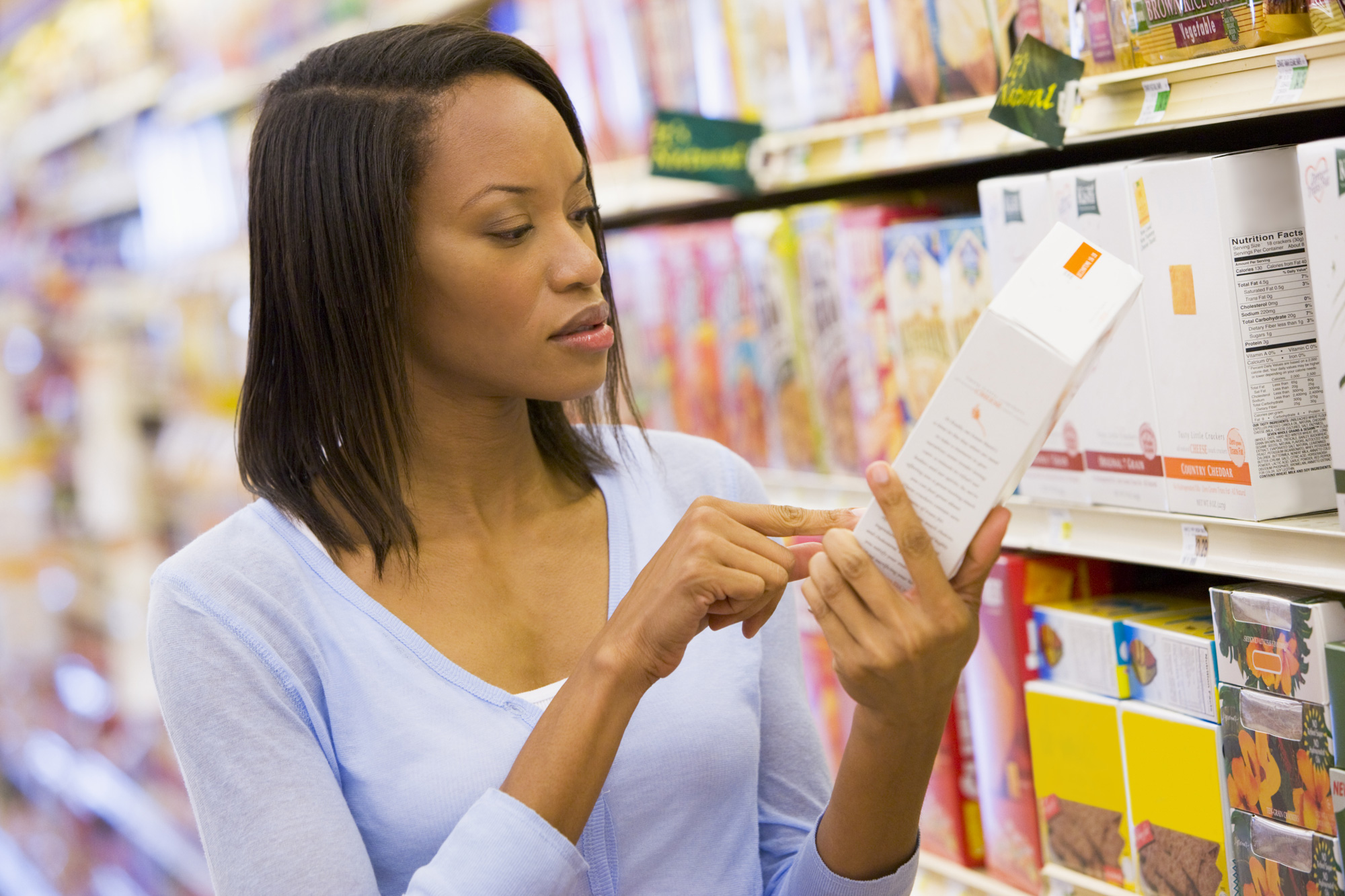Happy New Year, and with that the deadline for the New Food Label!
In the past twenty years, you’ve likely made a variety of updates. . . to your home, to your hairstyle, and of course to your phone. Yet, it’s been nearly two decades since the Nutrition Facts Label has been updated! Some manufacturers already implemented the new label but the U.S. Food and Drug Administration (FDA) required all Nutrition Facts Labels to adhere to the new requirements by 1st of January 2021. The updated labels will serve you better than the old version, and if you’re an avid reader of labels, you’ve likely noticed some manufactures have already instituted these changes. Let the new food labels and the Eatiquette app be your tools for a more informed lifestyle.
What’s New in Serving Sizes & Calories?
Both serving sizes and calories are presented in larger, bolded font on the new food labels. You should remember that serving size amounts reflect the amount Americans typically eat, rather than the amount recommended to eat. Serving sizes get updated every 20 years or so. The most recent serving sizes reflect USDA consumer survey data from 2003-2008. The final deadline for manufacturers to adhere to these updated amounts (typically higher) was this 1st of January. For instance, serving sizes for frozen desserts, such as ice creams and sorbets, have increased from 1/2 cup to 2/3 of a cup.
Some food labels present two calorie amounts; one calorie amount is “per serving,” and the other calorie amount is “per container.” So next time you start to polish off an entire pint of sorbet that has three, 2/3 cup servings per container, you’ll know right away you are consuming a total of 480 calories!
It is important to remember these new serving sizes are NOT recommendations of how much to eat, rather they are representative of what we usually do eat.

Percent Daily Value – %DV
The FDA explains, “Daily Values (DVs) are the recommended amounts of nutrients to consume or not to exceed each day. The %DV is how much a nutrient in a single serving of an individually packaged food or dietary supplement contributes to your daily diet.” * The DVs have been updated based on reviews of evidence-based nutrition research. For instance, the DV for sodium decreased from 2,400 mg/day to 2,300 mg/day which “means that a packaged food with 1,060mg of sodium in one serving (previously 44% DV) now has 46% DV.”
The %DV is a useful tool that can help you determine if a food is high or low in the desired nutrient. For a general guide, use the 5/20 rule, where 5% DV or less of a nutrient per serving is considered low, and 20% DV or more of a nutrient per serving is considered high. For optimum health, frequently choose foods that are above 20% for fiber, vitamin D, calcium, iron, and potassium, and below 5% for saturated fat, sodium, and added sugars.
The Eatiquette app doesn’t show percentages as DV, but it does color-code nutrients to help guide your choices. For clarification, when you look up the entry for Quaker Life Original Multigrain cold boxed cereal, you’ll see that the amount of fiber (6.4 grams) is color-coded green, which means this is a good choice for fiber! Similarly, nutrients that should be frequently avoided or eaten in moderation are color-coded in red and yellow respectively.

Nutrition Facts: What’s New and What’s Not?
“Calories from fat” and “vitamins A and C” are no longer listed on the Nutrition Facts Label. These changes were made based on research that shows the type of fat consumed is more important than the amount of fat, and deficiencies in vitamins A and C are rare.
“Added sugars” is a new listing on the Nutrition Facts Label and it represents all sugars added during the processing of foods. “Added sugars” do NOT include naturally occurring sugars such as those found in milk, fruits, and vegetables. Examples of items that contain a lot of added sugars are sugar-sweetened beverages (sodas and soft drinks, sweetened juices, etc), baked goods, desserts, etc. Based on a 2,000 calorie per day diet, the recommended maximum of added sugar you should take (DV) for added sugar is 50 grams. This new addition to the food label can help Americans be more aware of their added sugar intake, hopefully resulting in a reduction of added sugar consumption. Some people will opt for no added sugars at all in their diet but for others, this is too extreme.
“Vitamin D” and “potassium” are new additions to the food label because Americans often consume less than the recommended amount of these important nutrients. Diets high in vitamin D can reduce the risk of osteoporosis, and diets high in potassium can help curb hypertension.
The nutrients “calcium” and “iron” remain on the new food label, as diets high in these nutrients can reduce the risk of osteoporosis and anemia, respectively.
Why does a new food label matter?
The updated Nutrition Facts Labels provide more information in an easier to understand manner. More information leads to more informed food choices. These updates will gradually be reflected in the Eatiquette database and app, as the USDA updates their database and we receive more data from manufacturers and retailers.
What do you find most helpful about the new label? Here at Eatiquette, we are thrilled with all the updates, but especially with the addition of the “added sugars” information.










